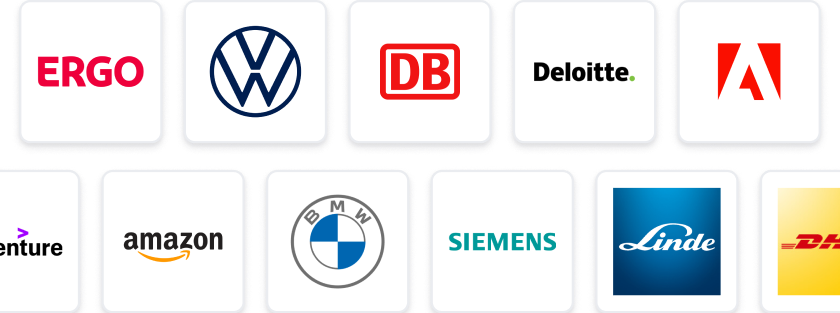At a Glance
- Tasks: Lead the design and delivery of secure desktop solutions using AVD, Citrix, and Windows 365.
- Company: Join UST, a forward-thinking IT services company based in Central London.
- Benefits: Enjoy hybrid work options and opportunities for professional growth.
- Why this job: Be at the forefront of modern desktop technology and make a real impact in a dynamic environment.
- Qualifications: Experience with AVD, Citrix VDI, and strong PowerShell skills are essential.
- Other info: Hurry and apply to be part of an innovative team!
The predicted salary is between 36000 - 60000 £ per year.
Join to apply for the role at UST.
Role Description
London - (Hybrid/On-site depending on business needs)
We’re looking for an experienced Desktop Architect to lead the design and delivery of scalable, secure desktop solutions across our enterprise environment. Based in Central London, you’ll drive the full lifecycle from concept to implementation of modern desktop platforms using Azure Virtual Desktop (AVD), Citrix, Windows 11/10, and Intune.
What You’ll Do
- Architect & Deliver: Lead the design, build, and support of enterprise desktop solutions across AVD, Windows 365, and Citrix.
- Modernize Platforms: Design hybrid-joined Windows 11 builds and manage them using Intune and Autopilot.
- Own Virtual Environments: Oversee Citrix VDI (on-prem and cloud), including migration to Citrix Cloud.
- Drive Automation: Automate desktop deployment and management with PowerShell—from provisioning and clean-up to performance tuning.
- Be the Expert: Act as the final escalation point for the engineering team and ensure compliance with security standards in partnership with InfoSec.
- Document & Design: Produce both high-level (HLD) and low-level (LLD) solution designs to support long-term scalability.
What You’ll Bring
- Proven experience as a Desktop Architect or Senior Engineer in large enterprise settings.
- Deep knowledge of AVD, Citrix VDI, and Windows 365.
- Expertise in Windows 10/11 deployment and management via Intune.
- Strong PowerShell scripting and automation skills.
- Experience with Azure AD, Autopilot, VMware, and hybrid environments.
- Ability to create HLD/LLD design documentation and lead technical delivery.
- Excellent troubleshooting, stakeholder engagement, and team leadership skills.
Nice To Have
- Microsoft or Citrix certifications (e.g., Azure Architect, Citrix Expert).
- Experience with security and compliance in desktop environments.
- Familiarity with zero-touch provisioning and modern endpoint strategies.
Hurry and apply for a more detailed conversation!
Contact Detail:
UST Recruiting Team
StudySmarter Expert Advice 🤫
We think this is how you could land Desktop Architect with AVD, Citrix VDI & Windows 365 (Architect II - Cloud Infrastructure Services)
✨Tip Number 1
Familiarise yourself with the latest trends and technologies in desktop architecture, particularly Azure Virtual Desktop (AVD), Citrix VDI, and Windows 365. This knowledge will not only help you during interviews but also demonstrate your commitment to staying current in the field.
✨Tip Number 2
Network with professionals in the industry by attending relevant meetups or webinars. Engaging with others who work in desktop architecture can provide valuable insights and potentially lead to referrals for the position at UST.
✨Tip Number 3
Prepare to discuss specific projects where you've successfully implemented desktop solutions using AVD, Citrix, or Intune. Highlighting your hands-on experience will set you apart from other candidates and show that you can deliver results.
✨Tip Number 4
Brush up on your PowerShell scripting skills, as automation is a key part of the role. Being able to demonstrate your ability to automate desktop deployment and management will be a significant advantage during the interview process.
We think you need these skills to ace Desktop Architect with AVD, Citrix VDI & Windows 365 (Architect II - Cloud Infrastructure Services)
Some tips for your application 🫡
Tailor Your CV: Make sure your CV highlights your experience with AVD, Citrix VDI, and Windows 365. Use specific examples of projects you've worked on that demonstrate your skills in designing and delivering desktop solutions.
Craft a Compelling Cover Letter: In your cover letter, explain why you're passionate about the role and how your background aligns with the responsibilities outlined in the job description. Mention your expertise in PowerShell scripting and automation, as well as your ability to create HLD/LLD documentation.
Showcase Relevant Certifications: If you have any relevant certifications, such as Microsoft or Citrix certifications, be sure to include them in your application. This can set you apart from other candidates and demonstrate your commitment to professional development.
Highlight Soft Skills: Don't forget to mention your soft skills, such as troubleshooting abilities, stakeholder engagement, and team leadership. These are crucial for a Desktop Architect role and can make a significant difference in your application.
How to prepare for a job interview at UST
✨Showcase Your Technical Expertise
Be prepared to discuss your experience with AVD, Citrix VDI, and Windows 365 in detail. Highlight specific projects where you led the design and implementation of desktop solutions, and be ready to answer technical questions that demonstrate your deep knowledge.
✨Demonstrate Problem-Solving Skills
Expect to face scenario-based questions that assess your troubleshooting abilities. Prepare examples of past challenges you've encountered in desktop architecture and how you resolved them, particularly focusing on automation with PowerShell and compliance with security standards.
✨Prepare for Design Documentation Discussion
Since producing HLD and LLD documentation is crucial for this role, be ready to discuss your approach to creating these documents. Bring examples if possible, and explain how they contributed to the scalability and success of previous projects.
✨Engage with Stakeholders
Highlight your experience in stakeholder engagement during the interview. Be prepared to discuss how you communicate complex technical concepts to non-technical stakeholders and how you ensure their needs are met throughout the project lifecycle.
